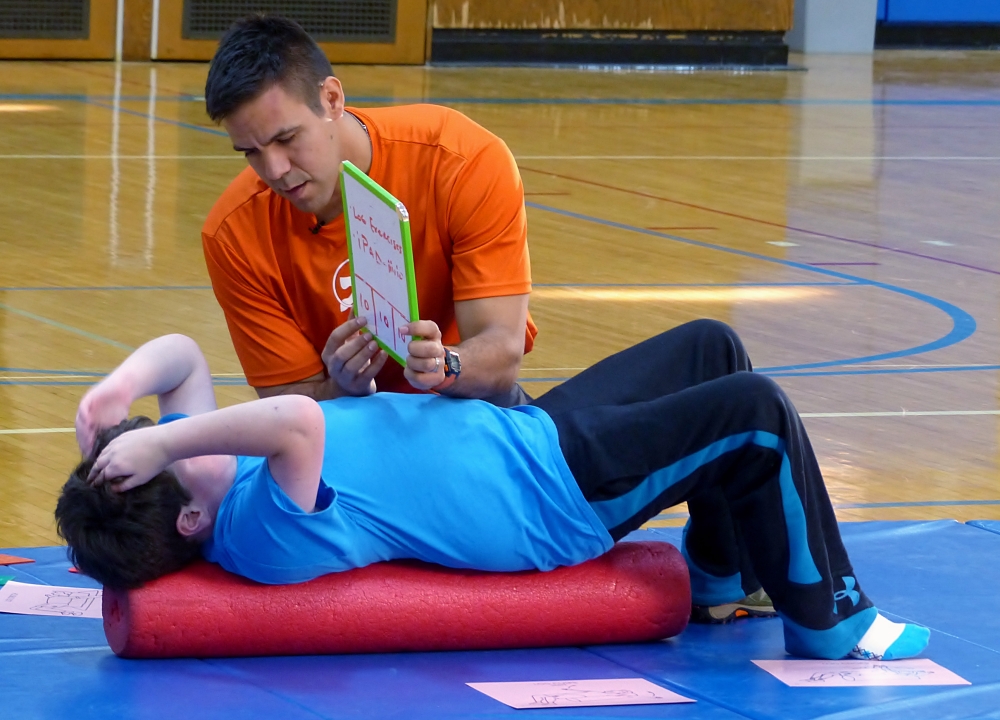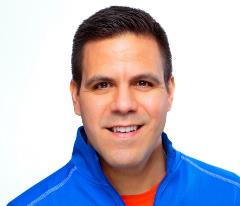David S. Geslak, BS, ACSM-EP |
July
9, 2019

3 simple evidence-based teaching strategies to help children with autism through exercise.
Parents of children with autism have rated exercise as the number one treatment, according to the National Survey of Autism Treatment Effectiveness. Research shows that exercise can improve on-task behaviors, language development and academics, while also reducing maladaptive behaviors. A 2017 study from Rutgers University (Olin, et al., 2017) has also shown that 10 minutes of low-intensity exercise was able to reduce echolalia (verbal repetition of phases or words) and hand-flapping, which are common behaviors associated with autism.
Despite these incredible results, fitness professionals and those who work in fitness centers continue to struggle with how to teach this community. The reason is simple: trainers do not know to use the same evidence-based teaching strategies that have been proven effective in the classroom.
1. It’s About Using Visuals
Engaging a person with autism into an exercise routine, or any new routine, will take time, creativity, and visual supports or pictures. Visual supports help bring in structure, routine, and sequence that many children with autism require in order to carry out their daily activities (Rao and Gagie, 2006). Visual supports, when implemented correctly, allow students with autism the freedom to engage in life, regardless of impairment (Hodgdon, 2007).
As the saying goes, “a picture is worth a thousand words.” By reducing your verbal instruction - or completely removing it - and replacing it with a picture of an exercise can make the difference in getting those with autism to make the exercise connection.
2. Make Exercise Part of their Routine
Those on the autism spectrum benefit from following a structured schedule from the minute they wake up. This is the same as many of us; hit the alarm clock, brush teeth, take a shower, get dressed, eat breakfast, go to work. The only difference is a person with autism may be using a visual support as they do each activity. Structure and routine are what keeps many on task in daily living, school, and it must be implemented in an exercise session.
It is critical that an exercise program is thoughtfully integrated into their daily or weekly routine. For example, the day typically doesn’t end at the end of a school day. Many go to various therapy sessions throughout the week for additional help. Educate parents that even one exercise session per week can be beneficial. Begin by having the family or individual choose ONE day and time per week to get started – and do NOT change that day or time.
3. Remember that Perfection is NOT the Goal – Persistence is
One of a personal trainer’s responsibilities is to instruct perfect form. When a client is using improper form, the typical words to correct it are “no” and “try again.” Those with autism hear or have heard “no” or “try again” more than you will ever know – especially in the schools. A trainer’s first goal should be to make exercise a positive experience.
ACSM recommends 30-60 minutes of moderate aerobic activity per day and for resistance exercise anywhere from 8-20 repetitions per exercise. These are realistic guidelines for most but not for those with autism. Start your clients out slowly. Engage them in a few exercises but not for an extended period of time, it may be only 3-8 minutes of aerobic activity and 1-2 muscular fitness or flexibility exercises for 2-8 repetitions.
If you get them moving, even for three minutes or 5 reps, that is a WIN for the client, you, and the parents! Of course you’ll want to gradually increase the amount of time the client spends being physically active, but remind them, their families and yourself that they are just getting started. Don’t focus on the form (as long as they are not being unsafe) – your primary focus needs to be about building the relationship.
Ready to learn more?
Take the next step with ACSM's Autism Exercise Specialist CEC Course!
Author: 
David S. Geslak, BS, ACSM-EP
As a Para-Educator and Fitness Coordinator at a school for children with autism, Coach Dave experienced first-hand the challenges of teaching exercise. By understanding that students with autism learn differently, he developed a system that has become a breakthrough in effectively teaching exercise. Twelve universities have incorporated his program into their Adapted Physical Education and Special Education Programs. He also created the ACSM/EC Autism Exercise Specialist Certificate.
Coach Dave graduated from the University of Iowa with a degree in Health Promotion, is an ACSM Certified Exercise Physiologist, Certified Strength and Conditioning Specialist, and a former student assistant strength and conditioning coach for the University of Iowa Football Program.
References
Olin S, McFadden B, Golem D, et al. The effects of exercise dose on stereotypical behavior in children with autism. Med Sci Sports Exerc. 2017; 49(5):983-90.
Rao SM, Gagie B. Learning through seeing and doing: Visual supports for children with autism. TEACHING Exceptional Children. 2006; 38(6):26–33.
Hodgdon LA. Cram101 textbook outlines to accompany: Visual Strategies for Improving Communication: Practical Supports for School and Home. 1st ed. Hodgdon (ME): Academic Internet Publishers; 2007.
More from David Geslak
 Autism Exercise Specialist | #2 Most Popular CEC Course
Autism Exercise Specialist | #2 Most Popular CEC Course